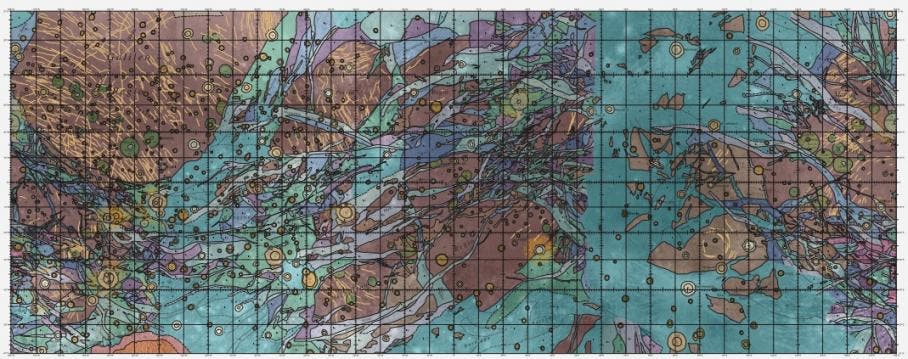
Ganymede is one of Jupiter’s satellites, and the largest moon in our solar system, spanning three-quarter of Mars’ diameter in size. NASA’s Galileo orbiter and the Voyager 1 and Voyager 2 missions all did a great job at surveying the Ganymede’s surface, providing valuable information helping astronomers better understand how the moon looks like on the surface or how it formed in the first place.
Released by the U.S. Geological Survey, this map covers all the most important geological features from the moon. Like you may have guessed, the most common features are craters represented by yellowish circles – young (pale yellow) and old (dark yellow). Full resolution maps can be downloaded here.
Was this helpful?



